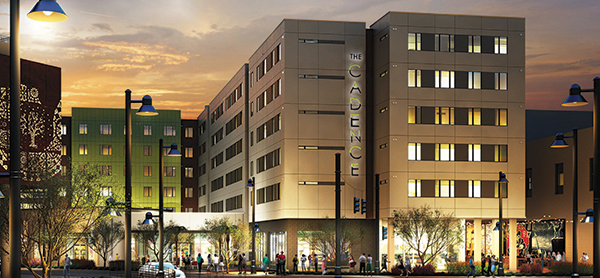 While construction swiftly proceeds for The Cadence student housing project, a leasing office, located at 218 N. 4th Ave., has already been open since the end of September signing University of Arizona students up at the 456-bed complex for the Fall 2013 semester, including 99 apartments with 167 beds on the Centro Garage.
While construction swiftly proceeds for The Cadence student housing project, a leasing office, located at 218 N. 4th Ave., has already been open since the end of September signing University of Arizona students up at the 456-bed complex for the Fall 2013 semester, including 99 apartments with 167 beds on the Centro Garage.
Mostly UA dorm students have been the first to lease rooms that will become available in August 2013 at the eastern edge of Downtown. They will experience an upgrade from tight dorm room bunks to having their own bedroom and bathroom at The Cadence. The dorm prison ambiance gives way to a near resort setting at The Cadence, which has one six-story L-shaped structure next to Rialto Theatre and another three-story structure atop the Centro Garage across the street. “A lot of people renting with us are from the dorms,” Amy Kirby, The Cadence’s marketing and leasing director. “They go ‘Wow’ when they see the mock-up (apartment at the leasing office) and the plans. They are coming from an environment where they are packed like sardines.”
The swimming pool is the center piece at The Cadence. “I think the pool area is going to be where everybody wants to be,” said Stephany Gamboa, a Cadence marketing assistant and UA junior. “The fire pits are awesome.” The L-shaped building will run along the Rialto Theatre and Broadway with a one-story commercial section extending along Toole Avenue to create a tenant-only courtyard with the pool.
“The pool has an outdoor kitchen, Las Vegas-style cabana and you have a movie screen right over the pool,” Kirby said. The pool area also has a large fire pit. A second fire pit will be in the more intimate courtyard on the rooftop on the Centro Garage housing that will feature landscaping, seating and a barbeque. “That will be more of a chill space,” said Chad Izmirian, a Capstone Development senior vice president based in the Encinitas, CA, office near San Diego. Capstone is the developer of The Cadence. The fire pits delineate the basic Capstone vision that the apartment on the garage may be more desirable to older students and the Rialto side for younger students. The Cadence is not targeting freshmen.
The Cadence offers a broad array of options, including studios, one, two, three, four and five bedrooms. “From our perspective, it’s more about designing units for a variety of demographics,” Izmirian said. “An older student – seniors or graduate students – would be inclined to rent a unit with a lesser number of roommates. A sophomore or junior is probably more inclined to want more roommates.” The five-bedroom units – there are five of them – were almost an afterthought, not the size Capstone usually builds. But they have proven surprisingly popular in the early months of leasing. “What we’re seeing in leasing is the 4’s and 5’s are going the quickest. The 5’s are almost sold out,” Izmirian commented.
The Cadence will home 97 apartments with 289 beds next to the Rialto – land that used to hold the Greyhound bus station and the Centro Garage will boast 99 apartments with 167 beds. In both buildings combined, there are 14 studios, 29 one-bedroom apartments, 71 two-bedroom, 62 three-bedroom, 14 four-bedroom and five five-bedroom apartments. No four- or five-bedroom units are on the garage.
Izmirian describes The Cadence as high-end urban student housing. The more traditional barren dorm room is becoming something of the past. “Students these days come in with higher expectations. Most students had their own bedroom and bathroom growing up. Technology is a huge thing. What you’re seeing is a bigger push for privacy”, Izmirian says.
Students are also gravitating to more urban environments. “I think they like the location Downtown,” said Ashley Farmer, another Cadence marketing assistant and a UA sophomore. “It’s close to campus but still Downtown.”
The Cadence sits right at the junction of Downtown and 4thAvenue. Right now, zero people live within a couple hundred yards of where Toole, Congress, 4th Avenue and Broadway converge. In one year, some 450 college students will occupy the space, and the streetcar should be rolling by in both directions.
“It will be good for Downtown. I do believe this will bridge 4th Avenue and Downtown finally,” Kirby said.
Construction started in July – and the Centro Garage has already largely disappeared behind and underneath the framing for three stories of Cadence apartments on top and another two stories on the face. There is a ledge off the third level of the four-level garage upon which a dozen apartments are being built. Izmirian calls this the building’s “eye brow.”
“We’re further along on the garage,” Izmirian said. “We essentially are done with framing. The roof will be complete soon. We will start adding windows and the exterior sheathing of the building. We will wrap the building with moisture protection. After that you will see the start of stucco right after Christmas.“ Within the framed structure, all the internal mechanical, electrical and plumbing is now getting installed.
On the Greyhound/Rialto side, the concrete podium that will serve as the ground floor is complete as is the wood framing of the first two levels of student apartments. Three more levels of apartments have yet to be framed and should be in place by the start of February.
The ground floor, with an 18-foot ceiling, will offer indoor amenities such as a fitness room, an event room, a media room, a great room – “a big living room,” Izmirian said, a multi-sport simulator, a business center, a tanning center and a sauna.
The Cadence’s urban character will come with a built-in commercial level. The garage side will have 10,000 square feet of retail on street level, and the Rialto side will add another 9,500 square feet along Toole Avenue. This commercial space could be filled with restaurants, brew pub, a coffee shop, “some sort of market,” maybe some other types of shops.
“We’ve had lots of interest,” Izmirian said. “We are negotiating our first letter of interest. Within the last 30 days, we started marketing in earnest.”
The Cadence offers three studio options with 435 to 472 square feet rent for $975 to $990 per month. The three one-bedroom options measure 531 to 672 square feet with rents of $1,060 to $1,120. The three two-bedrooms options have 748 to 879 square feet and rent for $799 to $825 per bedroom. The four-bedroom option is 1,347 square feet and rent is $678 per bedroom. The five-bedroom apartments cost $708 per month per bedroom, measure 2,162 square feet and a 55-inch television is included in the living area. Rent includes a room furnished with a bed, chair, desk and dresser. Each room also has a bathroom, a washer and dryer, and cable, Internet, water, sewer, pest control and trash are included. Students are responsible for phone and electricity.
For more information visit thecadencetucson.com.
This article originally appeared on DowntownTucson.org

 While construction swiftly proceeds for The Cadence student housing project, a leasing office, located at 218 N. 4th Ave., has already been open since the end of September signing University of Arizona students up at the 456-bed complex for the Fall 2013 semester, including 99 apartments with 167 beds on the Centro Garage.
While construction swiftly proceeds for The Cadence student housing project, a leasing office, located at 218 N. 4th Ave., has already been open since the end of September signing University of Arizona students up at the 456-bed complex for the Fall 2013 semester, including 99 apartments with 167 beds on the Centro Garage. Steve Tracy is a straightforward, practical kind of guy. The day I meet him he’s wearing no-nonsense work clothes and is fully involved in the hubbub of work at Thunder Canyon Brewery’s new Downtown location (220 E. Broadway at Fifth Avenue.) He apologizes for keeping me waiting, but I’m impressed, not perturbed—Steve started Thunder Canyon Brewery over a decade ago, and it’s cool to see that he’s still fully involved on the ground in day-to-day operations. With plenty of work still to be completed before the brewpub opens on January 8th (ed: NOW OPEN!), Steve is good-natured about the fact that I’m interrupting his day to pepper him with questions.
Steve Tracy is a straightforward, practical kind of guy. The day I meet him he’s wearing no-nonsense work clothes and is fully involved in the hubbub of work at Thunder Canyon Brewery’s new Downtown location (220 E. Broadway at Fifth Avenue.) He apologizes for keeping me waiting, but I’m impressed, not perturbed—Steve started Thunder Canyon Brewery over a decade ago, and it’s cool to see that he’s still fully involved on the ground in day-to-day operations. With plenty of work still to be completed before the brewpub opens on January 8th (ed: NOW OPEN!), Steve is good-natured about the fact that I’m interrupting his day to pepper him with questions.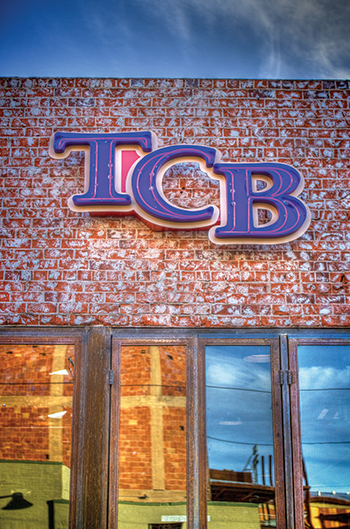 This doesn’t mean that TCB isn’t constantly innovating. “We’re always working on two or three new beers,” and “We always keep in mind what people are asking for,” says Steve. His current favorite TCB offering is the Cuppa Joe coffee porter, which is made with locally-roasted Cartel coffee, he says without hesitation. In general Steve prefers darker beers like stouts and porters—“I’m not so much a hoppy beer drinker,” he explains, though he adds that he appreciates all beers. Any guilty pleasures—a light beer or mainstream national beer? Steve looks slightly disgusted, and the answer is an adamant no. Well then, what are his favorite microbrews? He smiles and admits that he mostly drinks his own stuff. I get it—in addition to being delicious, drinking his own beer has to be the most economical option for Steve!
This doesn’t mean that TCB isn’t constantly innovating. “We’re always working on two or three new beers,” and “We always keep in mind what people are asking for,” says Steve. His current favorite TCB offering is the Cuppa Joe coffee porter, which is made with locally-roasted Cartel coffee, he says without hesitation. In general Steve prefers darker beers like stouts and porters—“I’m not so much a hoppy beer drinker,” he explains, though he adds that he appreciates all beers. Any guilty pleasures—a light beer or mainstream national beer? Steve looks slightly disgusted, and the answer is an adamant no. Well then, what are his favorite microbrews? He smiles and admits that he mostly drinks his own stuff. I get it—in addition to being delicious, drinking his own beer has to be the most economical option for Steve!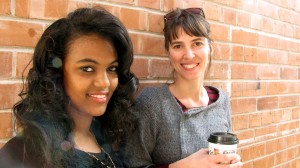
 For Katie Treat, owner of Posh Petals, setting up her new shop in the historic Tophy Building has brought her into the fold of 4th Avenue. Posh Petals specializes in custom flowers for events, so the retail space is a bit of a blank canvas. It’s a comfortable shop that she’s filled with funky antiques, artful glass vases, flower boxes, pots, and votives.
For Katie Treat, owner of Posh Petals, setting up her new shop in the historic Tophy Building has brought her into the fold of 4th Avenue. Posh Petals specializes in custom flowers for events, so the retail space is a bit of a blank canvas. It’s a comfortable shop that she’s filled with funky antiques, artful glass vases, flower boxes, pots, and votives.
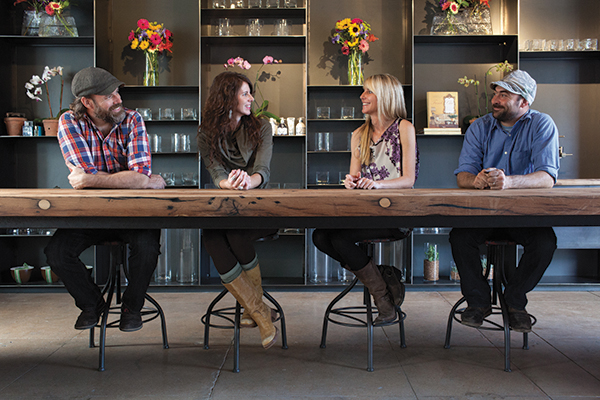
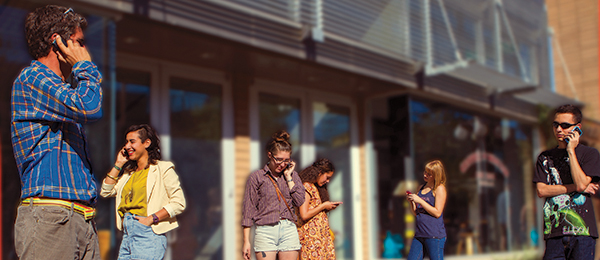
 Local non-profit organization Bicycle Inter-Community Art & Salvage (BICAS) will be hosting their 17th annual Art Auction and Celebration on December 1st and 2nd at Whistle Stop Depot (177 W. 5th St.). The two-day weekend event will merge the strong local communities of Tucson artists, cyclists and art lovers who will be gathering to view and bid on over 300 pieces handcrafted by local artists.
Local non-profit organization Bicycle Inter-Community Art & Salvage (BICAS) will be hosting their 17th annual Art Auction and Celebration on December 1st and 2nd at Whistle Stop Depot (177 W. 5th St.). The two-day weekend event will merge the strong local communities of Tucson artists, cyclists and art lovers who will be gathering to view and bid on over 300 pieces handcrafted by local artists. Desert Harvesters, a Tucson-based non-profit volunteer group devoted to native Southwest desert food, is holding two mesquite-milling events in November.
Desert Harvesters, a Tucson-based non-profit volunteer group devoted to native Southwest desert food, is holding two mesquite-milling events in November.



Also find us on...